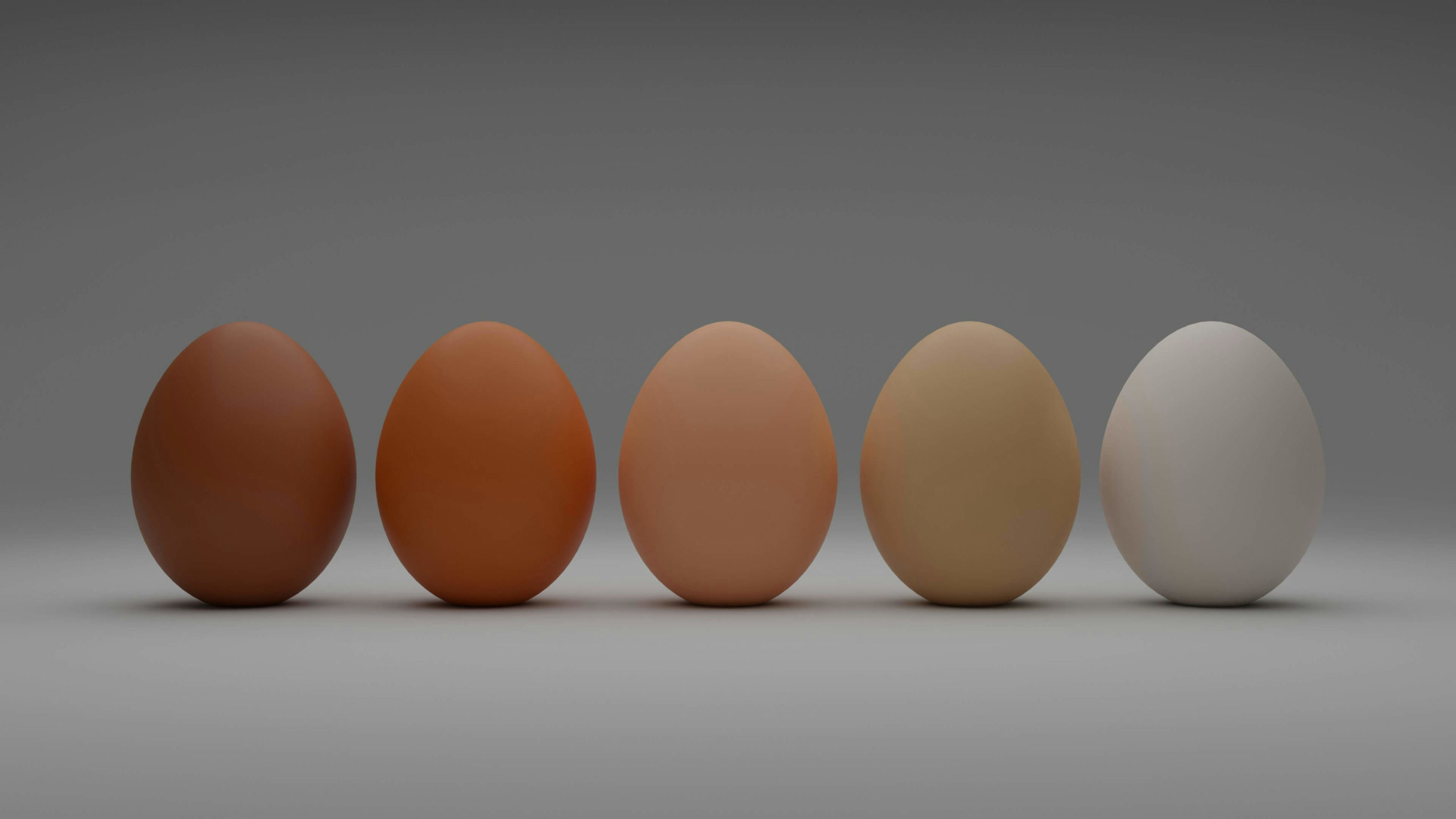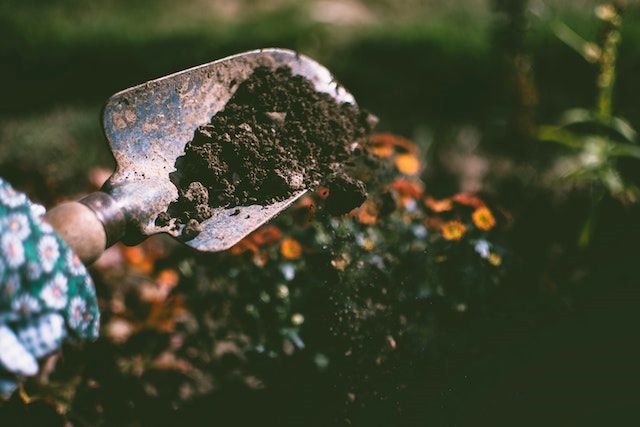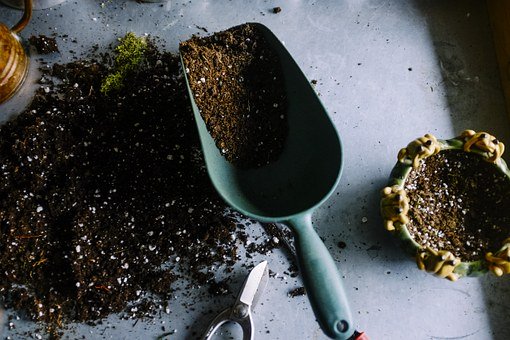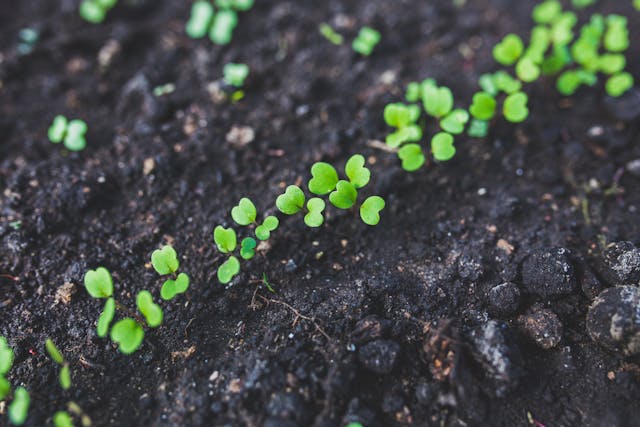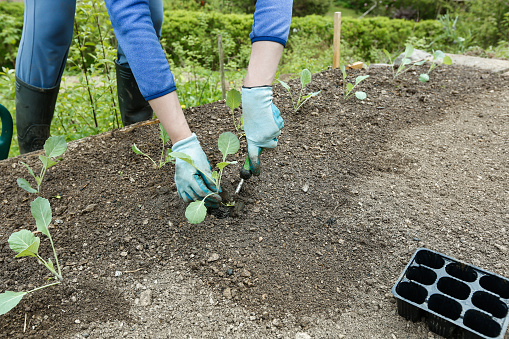Should You Add Eggshells to Your Vegetable Plants?
[et_pb_section fb_built=”1″ admin_label=”section” _builder_version=”3.22″][et_pb_row admin_label=”row” _builder_version=”3.25″ background_size=”initial” background_position=”top_left” background_repeat=”repeat” custom_margin=”-52px|auto||auto||”][et_pb_column type=”4_4″ _builder_version=”3.25″ custom_padding=”|||” custom_padding__hover=”|||”][et_pb_text admin_label=”H1 -Should You Add Eggshells to Your Vegetable Plants?” _builder_version=”4.8.1″ _module_preset=”default”]
Should You Add Eggshells to Your Vegetable Plants?
[/et_pb_text][et_pb_text admin_label=”Introduction” _builder_version=”4.8.1″ _module_preset=”default”]
Alright ladies, ready to unravel the mysteries of calcium in your potted veggies lives?
We’re here to spill the dirt on all things calcium.
Plant growth, the trouble with not enough calcium, and how to sprinkle that magical touch into your pots. Eggshells and other organic bits and pieces take center stage. So, grab your gardening gear, save those egg shells from breakfast, and let’s dive into this green adventure together!
[/et_pb_text][et_pb_text admin_label=”H2 – What is Calcium and Why do Plants Need It?” _builder_version=”4.8.1″ _module_preset=”default”]
What is Calcium and Why do Plants Need It?
[/et_pb_text][et_pb_text _builder_version=”4.8.1″ _module_preset=”default”]
Foundation for Plant Structure
Calcium acts as the building blocks for plant cells, providing structural support and stability. Just as calcium is vital for our bones, it plays a similar role in the plant world, contributing to the overall strength of your container vegetables.
Cell Wall Integrity
– Imagine plant cells as tiny bricks forming a wall. Calcium acts as the cement that holds these bricks together, ensuring the cell walls maintain their integrity. This is crucial for withstanding environmental stresses and maintaining the plant’s shape.
Nutrient Transport
Beyond structural support, calcium also plays a key role in nutrient transport within plants. It facilitates the movement of other essential nutrients, ensuring they reach the areas where they are needed most for optimal growth.
Enzyme Activation
Calcium acts as a catalyst, triggering the activation of various enzymes that are essential for critical biochemical processes within the plant. These enzymes, in turn, contribute to processes like photosynthesis and nutrient absorption.
Defense Against Stress
Container plants, confined to a limited space, often face stress factors. Calcium helps plants build resilience by activating stress-response mechanisms, making them better equipped to withstand environmental challenges like extreme temperatures or irregular watering.
Promoting Root Growth
Calcium is a key player in root development. It encourages the growth of a healthy root system, enabling plants to anchor securely in the container soil and absorb water and nutrients efficiently.
Fruit Development and Quality
For those growing fruit-bearing vegetables, calcium is a game-changer. It contributes to the formation of sturdy cell walls in fruits, preventing issues like blossom-end rot in tomatoes and enhancing overall fruit quality.
[/et_pb_text][/et_pb_column][/et_pb_row][et_pb_row _builder_version=”4.8.1″ _module_preset=”default” custom_margin=”-25px|auto||auto||”][et_pb_column type=”4_4″ _builder_version=”4.8.1″ _module_preset=”default”][et_pb_text admin_label=”H2 – Organic Sources of Calcium for Container Vegetable Plants” _builder_version=”4.8.1″ _module_preset=”default” custom_margin=”12px|||||” custom_padding=”||23px|||”]
Organic Sources of Calcium for Container Vegetable Plants
[/et_pb_text][et_pb_text admin_label=”Text” _builder_version=”4.8.1″ _module_preset=”default” custom_margin=”12px|||||” custom_padding=”||23px|||”]
If you’re looking for a natural, safe and good source of calcium for your veggie plants, try these..
[/et_pb_text][/et_pb_column][/et_pb_row][et_pb_row column_structure=”1_3,2_3″ _builder_version=”4.8.1″ _module_preset=”default” custom_margin=”|auto|-22px|auto||” custom_padding=”0px||12px|||”][et_pb_column type=”1_3″ _builder_version=”4.8.1″ _module_preset=”default”][et_pb_image src=”https://www.urban-gardener.co.za/wp-content/uploads/2024/02/Infographic-organic-sources-calcium.jpg” alt=”Infographic with 5 organic sources of calcium that can be used in your vegetable plants” title_text=”Infographic-organic-sources-calcium” admin_label=”infographic” _builder_version=”4.8.1″ _module_preset=”default”][/et_pb_image][/et_pb_column][et_pb_column type=”2_3″ _builder_version=”4.8.1″ _module_preset=”default”][et_pb_text _builder_version=”4.8.1″ _module_preset=”default” custom_padding=”0px|||||”]
- Eggshells: packed with calcium carbonate, eggshells provide a slow-release, organic source of calcium.
- Crustacean shells: shells from crustaceans like lobsters and crabs. They are rich in calcium and can be ground into a fine powder.
- Bone meal: derived from crushed animal bones, bone meal is another fantastic organic calcium source. It releases calcium gradually, offering a sustained supply to your vegetable plants.
- Calcium-rich seaweed: seaweed a valuable resource for your garden too. Some types of seaweed are not only rich in trace elements but also contain calcium.
- Wood ash: if you have a fireplace or wood-burning stove, the ash generated is a surprising source of calcium.
[/et_pb_text][/et_pb_column][/et_pb_row][et_pb_row _builder_version=”4.8.1″ _module_preset=”default” custom_margin=”31px|auto||auto||” custom_padding=”0px|||||”][et_pb_column type=”4_4″ _builder_version=”4.8.1″ _module_preset=”default”][et_pb_text _builder_version=”4.8.1″ _module_preset=”default” custom_padding=”||12px|||”]
However, use it cautiously, as wood ash also raises the soil’s pH. It’s best suited for plants that prefer slightly alkaline conditions.
Oh yes, and another good source of calcium for soil is cuttlefish. If you’re walking along the beach and find one, take it home, clean off the salt, grind it up and use that. Simple, natural, organic.
[/et_pb_text][et_pb_text _builder_version=”4.8.1″ _module_preset=”default” custom_padding=”||12px|||”]
Remember to observe your plants’ reactions to these organic sources and adjust quantities accordingly. By harnessing these natural treasures, you’re not just providing calcium; you’re fostering a thriving ecosystem within your container garden.
[/et_pb_text][et_pb_image src=”https://www.urban-gardener.co.za/wp-content/uploads/2024/01/Are-you-a-mom-wanting-to-grow-healthy-food.jpg” alt=”Are you a mom wanting to grow healthy food” title_text=”Copy of Beets banner – eat the greens” url=”https://www.facebook.com/groups/momsgrowinghealthyfood” url_new_window=”on” align=”center” admin_label=”Banner – beet seeds are large and tough” _builder_version=”4.8.1″ _module_preset=”default”][/et_pb_image][et_pb_text admin_label=”H2 – How Do Plants Absorb the Calcium?” _builder_version=”4.8.1″ _module_preset=”default” custom_margin=”26px|||||” custom_padding=”22px|||||”]
How Do Plants Absorb the Calcium?
[/et_pb_text][et_pb_text _builder_version=”4.8.1″ _module_preset=”default” custom_margin=”26px|||||” custom_padding=”22px|||||”]
Understanding how plants absorb calcium is key to ensuring your container vegetables receive the maximum benefit. Let’s delve into the mechanisms and the importance of proper application.
Root Uptake
– The primary route for plants to absorb calcium is through their roots. Calcium ions, dissolved in soil moisture, are taken up by the plant’s root hairs. This process is essential for establishing a baseline level of calcium within the plant.
Passive Transport
– Calcium is unique in its uptake mechanism, employing both active and passive transport systems. In passive transport, calcium moves into the root cells along a concentration gradient, meaning it moves from areas of higher concentration in the soil to areas of lower concentration in the root.
Active Transport
– Active transport is another vital process where the plant expends energy to absorb calcium against the concentration gradient. This ensures that even when soil calcium levels are low, the plant can still acquire the essential nutrient.
Role in Water Movement
– Calcium plays a role in the regulation of water movement within the plant. Adequate calcium levels contribute to the proper functioning of cell membranes, allowing for efficient water uptake by the roots.
Translocation in the Xylem
– Once absorbed, calcium is transported within the plant through the xylem vessels. This translocation is crucial for delivering calcium to different parts of the plant, including leaves, stems, and developing fruits.
Cell Wall Deposition
– A significant portion of absorbed calcium is utilized in the formation and strengthening of cell walls. This is particularly important for plants in containers, as sturdy cell walls contribute to overall plant structure and resilience.
Understanding these processes empowers you to make informed decisions about the application of calcium-rich amendments, ensuring your container vegetables receive the nutrients they need for optimal health and productivity.
[/et_pb_text][et_pb_text admin_label=”H2 – Adding calcium to your vegetable plants” _builder_version=”4.8.1″ _module_preset=”default” custom_margin=”||33px|||” custom_padding=”31px|||||”]
Adding Calcium to Your Vegetable Plants
[/et_pb_text][et_pb_image src=”https://www.urban-gardener.co.za/wp-content/uploads/2024/02/Adding-calcium-to-your-vegetable-plants.jpg” alt=”Chicken amongst lettuce plants” title_text=”Adding calcium to your vegetable plants” url=”https://winning-experimenter-5856.ck.page/e657346f20″ url_new_window=”on” align=”center” _builder_version=”4.8.1″ _module_preset=”default” custom_margin=”38px||51px|||”][/et_pb_image][et_pb_text admin_label=”H3 – How do you add calcium to your plants?” _builder_version=”4.8.1″ _module_preset=”default” custom_margin=”-26px||33px|||” custom_padding=”31px|||||”]
How Do You Add Calcium to Your Plants?
[/et_pb_text][et_pb_text admin_label=”Text” _builder_version=”4.8.1″ _module_preset=”default” custom_margin=”-15px||33px|||” custom_padding=”0px|||||”]
Ensuring your container vegetables receive the calcium they need involves thoughtful application. Follow these step-by-step instructions to incorporate calcium into your gardening routine, with a focus on using crushed eggshells for plant growth:
1. **Collect Eggshells:**
– Save eggshells from your kitchen. Rinse them thoroughly to remove any residue and allow them to dry.
2. **Crush the Eggshells:**
– Once dry, crush the eggshells into small pieces. This can be done using a mortar and pestle or even by placing them in a plastic bag and gently crushing with a rolling pin.
3. **Incorporate into Soil Mix:**
– Mix the crushed eggshells into your container soil. Ensure an even distribution to provide a steady release of calcium over time.
4. **Top Dressing:**
– For existing plants, consider top dressing the soil with crushed eggshells. Gently sprinkle the crushed shells around the base of your plants, avoiding direct contact with stems.
5. **Composting with Eggshells:**
– Another effective method is to add crushed eggshells to your compost pile or even your worm farm. As the compost matures, it becomes a nutrient-rich blend that can be added to your container soil.
6. **Water Thoroughly:**
– After incorporating the eggshells, water your container plants thoroughly. This helps make the calcium more accessible to the roots.
[/et_pb_text][et_pb_text admin_label=”H3 – When do you add calcium to your plants?” _builder_version=”4.8.1″ _module_preset=”default” min_height=”49px” custom_margin=”46px|||||” custom_padding=”||0px|||”]
When Do You Add Calcium to Your Plants?
[/et_pb_text][et_pb_image src=”https://www.urban-gardener.co.za/wp-content/uploads/2024/02/Clock-vegetable-plants-16to9.jpg” alt=”Clock amonsgt vegetablee plants to show that adding calcium is down at certain times” title_text=”Clock-vegetable-plants-16to9″ url=”https://winning-experimenter-5856.ck.page/e657346f20″ url_new_window=”on” align=”center” _builder_version=”4.8.1″ _module_preset=”default” custom_margin=”38px||51px|||”][/et_pb_image][et_pb_image src=”https://www.urban-gardener.co.za/wp-content/uploads/2023/11/Banner-download-our-easy-to-use-companion-planting-guide.png” alt=”Banner – download our easy to use companion planting guide” title_text=”Banner – download our easy to use companion planting guide” url=”https://winning-experimenter-5856.ck.page/e657346f20″ url_new_window=”on” align=”center” admin_label=”Opt in – download free companion planting guide” _builder_version=”4.8.1″ _module_preset=”default” custom_margin=”38px||51px|||”][/et_pb_image][et_pb_text admin_label=”Text” _builder_version=”4.8.1″ _module_preset=”default” min_height=”49px” custom_margin=”46px||3px|||” custom_padding=”||0px|||”]
Understanding the timing for calcium application is crucial for maximizing its benefits in your container garden. Consider these guidelines, including the advantages of adding eggshells at specific growth stages:
1. **During Planting:**
– Mix calcium-rich amendments like crushed eggshells into the soil when initially planting your vegetables. This gets the calcium in from the start. ,
2. **Early Growth Stages:**
– In the early stages of growth, focus on calcium supplementation. This is particularly important for plants like tomatoes, which benefit significantly from adequate calcium during flowering and fruit development.
3. **Mid-Season Boost:**
– As your container vegetables enter their peak growing season, consider a mid-season boost of calcium. This helps address any nutrient depletion in the soil.
4. **Before Flowering:**
– For plants that flower before setting fruit, such as peppers, providing an extra dose of calcium just before flowering enhances the chances of healthy fruit development.
[/et_pb_text][et_pb_text admin_label=”H3 – Which vegetable plants don’t like added calciuim?” _builder_version=”4.8.1″ _module_preset=”default” min_height=”61px” custom_margin=”10px||15px||false|false” custom_padding=”1px||14px||false|false”]
Which Vegetable Plants Don’t Like Additional Calcium?
[/et_pb_text][et_pb_image src=”https://www.urban-gardener.co.za/wp-content/uploads/2024/02/Plants-that-dont-like-calcium-1.jpg” alt=”Backward with raised beds and container plants” title_text=”Plants that don’t like calcium” align=”center” _builder_version=”4.8.1″ _module_preset=”default”][/et_pb_image][et_pb_text admin_label=”Text” _builder_version=”4.8.1″ _module_preset=”default” min_height=”264.2px” custom_margin=”-31px||15px|||” custom_padding=”56px||0px|||”]
While calcium is generally beneficial, some plants may not thrive with excess amounts.
**Leafy Greens**
– Some leafy greens, like spinach and Swiss chard, prefer slightly acidic soils. Excessive calcium may interfere with nutrient uptake for these plants.
**Beets and Radishes:**
– Root vegetables like beets and radishes can develop quality issues in the presence of too much calcium. Maintain a balanced nutrient profile for optimal growth.
[/et_pb_text][et_pb_text admin_label=”H2 – Common signs of deficiency in your container plants” _builder_version=”4.8.1″ _module_preset=”default” custom_margin=”-8px||39px|||”]
Common Signs of Calcium Deficiency in Your Vegetable Plants
[/et_pb_text][et_pb_text admin_label=”Text ” _builder_version=”4.8.1″ _module_preset=”default” custom_margin=”20px|||||” custom_padding=”||32px|||”]
Identifying calcium deficiency in your container vegetables is crucial for maintaining plant health and productivity. One telltale sign is the appearance of blossom-end rot, a condition often observed in tomatoes and peppers. This manifests as dark, sunken areas on the bottom of the fruit, compromising its quality.
Additionally, stunted growth and distorted leaf development may signal insufficient calcium.
[/et_pb_text][et_pb_image src=”https://www.urban-gardener.co.za/wp-content/uploads/2024/01/Blossom-end-rot-1.jpg” alt=”Blossom-end rot in tomatoes” title_text=”Blossom-end-rot” align=”center” admin_label=”Image – blossom-end rot” _builder_version=”4.8.1″ _module_preset=”default”][/et_pb_image][et_pb_text admin_label=”Text ” _builder_version=”4.8.1″ _module_preset=”default” custom_margin=”20px|||||” custom_padding=”15px|||||”]
To prevent these issues, incorporating calcium-rich amendments is essential. Use your organic sources, like the eggshells, in your garden and this will help not only with the deficiency, but it also just puts goodness back into the soil.
Monitor your plants, “walk your garden” and do something if you notice your plants are looking at bit ‘funky’.
[/et_pb_text][et_pb_text admin_label=”H2 – Tips for effective application of calcium” _builder_version=”4.8.1″ _module_preset=”default” min_height=”26.8px” custom_margin=”||57px|||” custom_padding=”9px||0px|||”]
Tips for Effective Application of Calcium
[/et_pb_text][et_pb_text admin_label=”Text ” _builder_version=”4.8.1″ _module_preset=”default” min_height=”797.5px” custom_margin=”-20px||44px|||” custom_padding=”0px|||||”]
If your plants are needing a calcium boost, here are some easy-to-follow, practical tips to enhance calcium absorption.
1. Finely grind your supplement:
– When trying to add calcium-rich amendments like eggshell into the soil, grind it into a powder first before applying to your soil. A plant cannot absorb half an eggshell, or a crab’s leg!
2. Even Distribution
– Distribute calcium amendments evenly throughout the container soil. This promotes uniform access for the plants, preventing localized nutrient imbalances. Give it all a good toss together before planting.
3. Adequate Watering
– Calcium absorption is closely linked to water uptake. Maintain consistent and adequate watering to facilitate the movement of calcium through the soil to the plant’s roots.
4. pH Monitoring:
– Regularly monitor the pH of your container soil. Calcium absorption is influenced by soil pH, and maintaining a slightly acidic to neutral pH range enhances the availability of calcium to plants. The means your soild should be ranging between 6.0 and 6.9, and a pH of 7.0 (7.0 being the pH for neutral soil).
5. Timing Matters:
– Apply calcium amendments at strategic times. Consider adding eggshell powder or other amendments into the hole before planting, during the early stages of plant growth and before critical growth phases, such as flowering and fruit development.
6. Complementary Nutrients:
– Ensure a balanced ‘diet’ for your plant: Calcium absorption can be influenced by the presence of other nutrients. A well-rounded fertilization approach supports overall plant health.
8. Fresh Soil:
– Don’t re-use the same soil over and over again. The only nutrients that plants growing in containers have, is whatever you give them. I toss that soil into the compost heap or start a new worm farm.
By incorporating these tips into your container gardening routine, you create an environment that maximizes calcium absorption. The use of eggshell powder further enriches the soil, providing a sustainable and effective source of calcium for your thriving vegetable plants.
[/et_pb_text][et_pb_image src=”https://www.urban-gardener.co.za/wp-content/uploads/2024/01/Are-you-a-mom-wanting-to-grow-healthy-food.jpg” alt=”Are you a mom wanting to grow healthy food” title_text=”Beet greens are edible banner” align=”center” _builder_version=”4.8.1″ _module_preset=”default” hover_enabled=”0″ url=”https://www.facebook.com/groups/momsgrowinghealthyfood” url_new_window=”on” sticky_enabled=”0″][/et_pb_image][et_pb_text admin_label=”H2 – Common Mistakes to Avoid When Adding Calcium to Container Plants” _builder_version=”4.8.1″ _module_preset=”default” min_height=”69px” custom_margin=”52px|||||” custom_padding=”14px|||||”]
Common Mistakes to Avoid When Adding Calcium to Container Plants
[/et_pb_text][et_pb_text admin_label=”Text ” _builder_version=”4.8.1″ _module_preset=”default” custom_margin=”-20px|||||” custom_padding=”31px|||||”]
When adding calcium to your container plants, it’s crucial to avoid common mistakes that may hinder rather than enhance plant health.
One common pitfall is overapplication of calcium —excessive amounts of calcium can disrupt the balance of other nutrients in the soil. To prevent this, follow recommended dosage guidelines and monitor your plants for signs of nutrient imbalance.
Additionally, applying calcium amendments to compacted or waterlogged soil can limit absorption, so ensure proper soil aeration and drainage. Poor soil just doesn’t do anything at all for your plants!
Another mistake is relying solely on one calcium source; diversity in organic amendments, including eggshells in the garden, ensures a comprehensive nutrient profile.
And finally, timing matters—applying calcium at the wrong growth stage may not address the plant’s needs effectively.
By steering clear of these pitfalls and adhering to best practices, you’ll pave the way for successful calcium supplementation and a thriving container garden.
[/et_pb_text][et_pb_text admin_label=”H2 – Happy Gardening!” _builder_version=”4.8.1″ _module_preset=”default” custom_margin=”40px|||||”]
Happy gardening!
[/et_pb_text][/et_pb_column][/et_pb_row][et_pb_row column_structure=”1_3,1_3,1_3″ _builder_version=”4.8.1″ _module_preset=”default”][et_pb_column type=”1_3″ _builder_version=”4.8.1″ _module_preset=”default”][et_pb_image src=”https://www.urban-gardener.co.za/wp-content/uploads/2023/11/Pinterest-pin-Easy-Recipes-with-Brussel-Sprouts.jpg” alt=”Delicious Brussel sprout recipes” title_text=”Pinterest pin – Easy Recipes with Brussel Sprouts” url=”https://www.urban-gardener.co.za/brussel-sprouts-recipes-roasted.html” url_new_window=”on” admin_label=”Pinterest – Brussel sprout recipes” _builder_version=”4.8.1″ _module_preset=”default”][/et_pb_image][/et_pb_column][et_pb_column type=”1_3″ _builder_version=”4.8.1″ _module_preset=”default”][et_pb_image src=”https://www.urban-gardener.co.za/wp-content/uploads/2023/11/Pinterest-pins-grow-your-own-sweet-potatoes.png” alt=”Sweet potato with slips growing from it” title_text=”Pinterest pins – grow your own sweet potatoes” url=”https://www.urban-gardener.co.za/how-to-farm-home-grown-sweet-potatoes-in-a-bucket.html” url_new_window=”on” admin_label=”Pinterst – grow sweet potatoes” _builder_version=”4.8.1″ _module_preset=”default”][/et_pb_image][/et_pb_column][et_pb_column type=”1_3″ _builder_version=”4.8.1″ _module_preset=”default”][et_pb_image src=”https://www.urban-gardener.co.za/wp-content/uploads/2023/11/How-to-Care-For-Your-Lemon-Tree.jpg” alt=”How to care for your lemon tree” title_text=”How to Care For Your Lemon Tree” url=”https://www.urban-gardener.co.za/how-to-care-for-your-lemon-tree.html” url_new_window=”on” admin_label=”Pinterest – care for your lemon tree” _builder_version=”4.8.1″ _module_preset=”default”][/et_pb_image][/et_pb_column][/et_pb_row][/et_pb_section]
